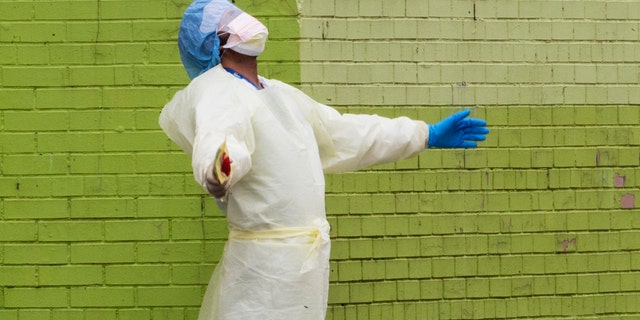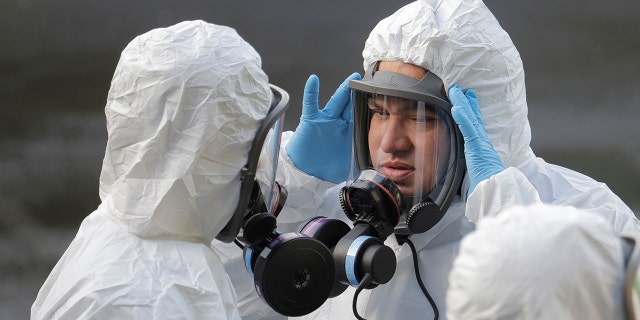Get all the latest news on coronavirus and more delivered daily to your inbox. Sign up here.
When one is struck by the coronavirus, symptoms can range from none to fatal. But for the many million in between who are infected by the novel pathogen and then recover, just how damaging are the lingering effects?
Medical researchers are on the quest to find out.
“Anytime you get really sick, it is possible that it affects your different organ systems, leaving varying degrees of compromise, or you may have none at all,” Dr. Eric Carter, physician and co-CEO of medical app DocClocker, told Fox News. “We still don’t fully understand the immune response and if recovery and immunity development offer any level of protection against reinfection and disease severity.”
Thus, while the prognostic symptoms of coronavirus, formally called COVID-19, have been well-documented – ranging from fevers and a loss of taste to breathing problems and pneumonia – scientists are purporting to piece together what may happen to those who contract the illness and recover.
HOW IS THE CORONAVIRUS MUTATING INTO DIFFERENT STRAINS?
Studies to date have shown that the vast majority of those who are infected are on the mild scale and should recover with no lasting effects. But for more serious cases, especially those who require a ventilator and/or ICU treatment which is around 20 percent of those hospitalized, the possibility of lasting lung damage or severe respiratory affliction is a very real threat.
“For more than 80 percent of patients infected with the coronavirus, recovery is likely to be complete. However according to a recent study from Hong Kong, about 20-30 percent of hospitalized patients will have decreased lung capacity due to pneumonia and inflammation caused by the disease or by the ventilator treatment itself,” explained Dr. Steven Berk, executive vice president and dean of Texas Tech Health Sciences Center School of Medicine.
CLICK HERE FOR COMPLETE CORONAVIRUS COVERAGE
He also noted that patients who develop acute respiratory distress syndrome and require long-term mechanical ventilation, sometimes a week or more, are most likely to have persistent shortness of breath, and evidence of scarring or pulmonary fibrosis.



A medic of the Elmhurst Hospital Center medical team reacts after stepping outside of the emergency room, Saturday, April 4, 2020, in the Queens borough of New York.
(AP Photo/Mary Altaffer)
A report published earlier this month in the medical publication journal Cellular & Molecular Immunology from researchers at Fudan University in Shanghai and the New York Blood Center noted that when researchers instituted contact between coronavirus and lab-grown T lymphocytes – referred to as T cells – the virus paralyzed these critical cells, which help identify and expel pathogens in the body. The researchers also found that SARS, a related coronavirus, could not infect T cells.
Disturbingly, the study also indicated that damage to the T lymphocytes paralleled that caused by HIV.
Moreover, preliminary studies out of China have also underscored that around 12 percent of survivors of severe cases endured protracted heart issues, and some showed signs of impaired liver function.
Given that the virus itself is only a few months old, having originated out of China at some point late last year, experts have only small-scale, immediate term studies to go on, and are mainly looking at data from related viruses SARS and MERS to gauge a more in-depth understanding.
“Those with SARS pneumonia had shortness of breath and evidence of pulmonary fibrosis one month after infection. Most patients improved over time,” Berk continued. “Patients with SARS continued to excrete the virus, sometimes for more than 20 days. Those who had developed acute respiratory distress syndrome (ARDS) remained short of breath for months or for a lifetime.”
Texas and Arizona-based hormone specialist Dr. Elizabeth Lee Vliet also pointed out that, in examining the long-term adverse effects of a variety of viral illnesses, problems include lungs illnesses, as well as issues with neurological systems showing cognitive and nerve dysfunction, heart damage – viral cardiomyopathy that can lead to congestive heart failure – as well as kidney impairment that in astringent cases can lead to progressive kidney failure.
“We have known that severe viral illnesses can lead to severe fatigue that can become debilitating,” she said. “Those are the major organ systems we already know can be damaged by severe viral illnesses with known viruses, so I plan to be monitoring my patients for the emergence of such problems as we go forward.”
WASHINGTON CORONAVIRUS CASES SURGE AMONG HOMELESS SHELTER POPULATION, DEATH REPORTED AT COUNTY ISOLATION SITE
From Vliet’s purview, long-term consequences will more commonly be seen in older patients who have pre-existing conditions such as heart disease, kidney disease and pulmonary fibrosis.



A worker from a Servpro disaster recovery team wearing a protective suit and respirator adjusts his mask before entering the Life Care Center in Kirkland, Wash. to begin cleaning and disinfecting the facility, Wednesday, March 11, 2020, near Seattle.
(AP Photo/Ted S. Warren)
And for those just weeks or months in recovery with now negative test results, it is not only the enduring physical ramifications – such as reported breathlessness, lung pain, or fatigue – that plague, but the psychological distress, isolation and fear of a relapse that medical professionals are monitoring.
“From the original SARS outbreak in 2003, we see that psychiatric illness is the most notable long-term outcome,” said Dr. Melissa Nolan, an infectious disease expert, and professor at the University of South Carolina. “Including post-traumatic stress disorder and depression.”
Berk concurred that “anxiety, depression, and muscle weakness were also common.”
But if the novel pathogen has proven anything to date, it is that uncertainty and outliers are its hallmarks.
“It will also be very important to determine the level of antibody developed to coronavirus, as investigators also determine the level of antibody that guarantees protection against a second infection,” Berk added.

